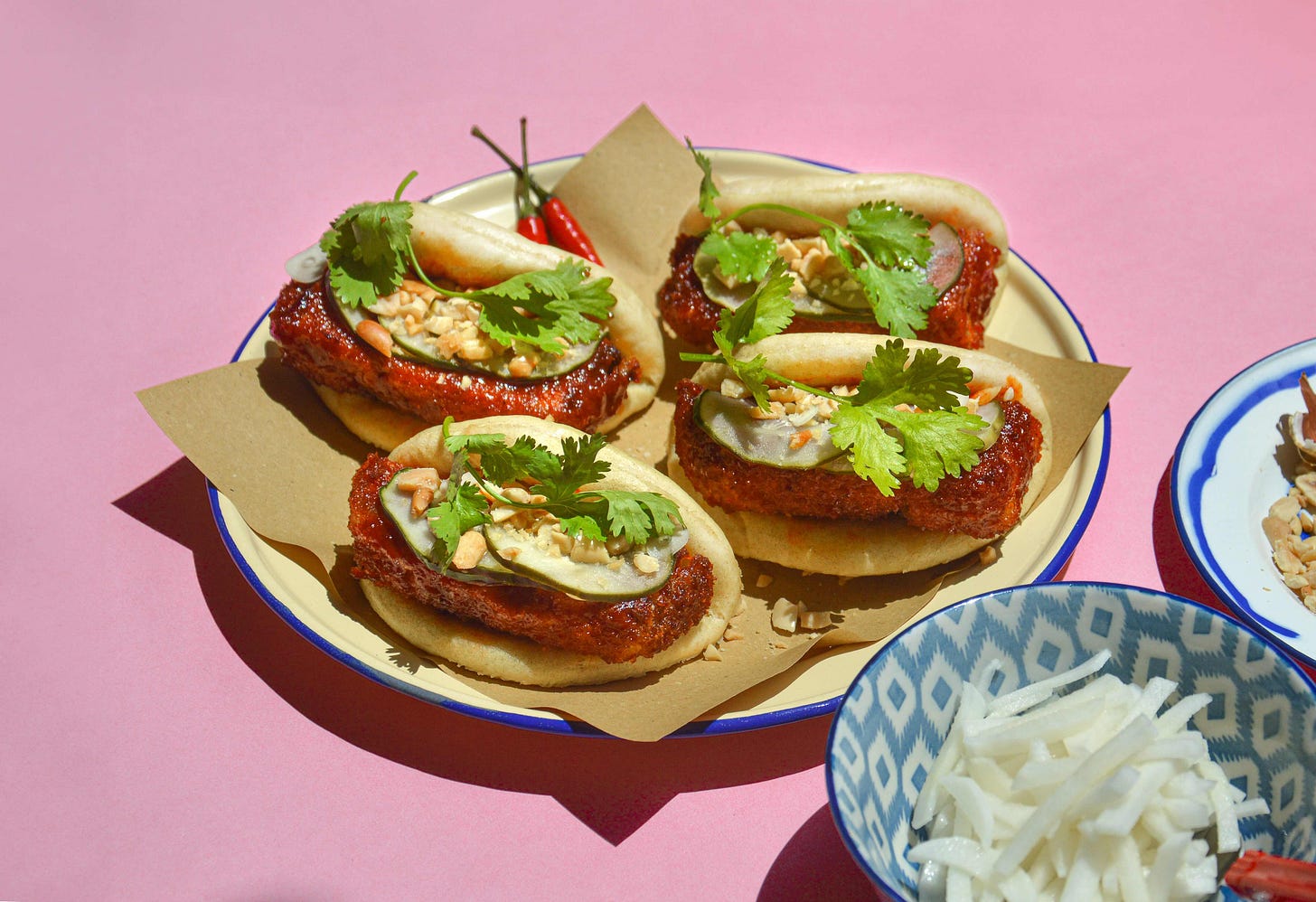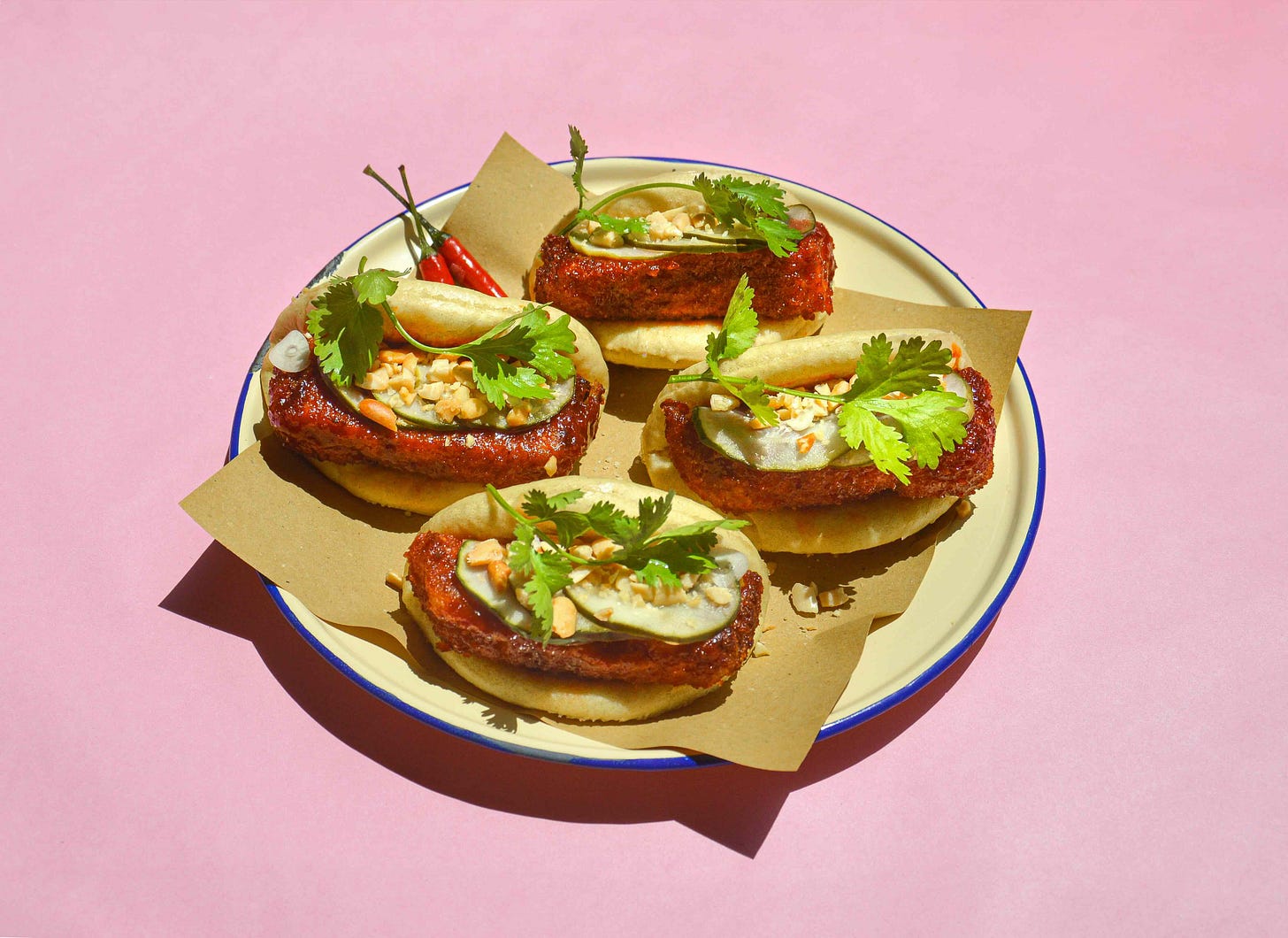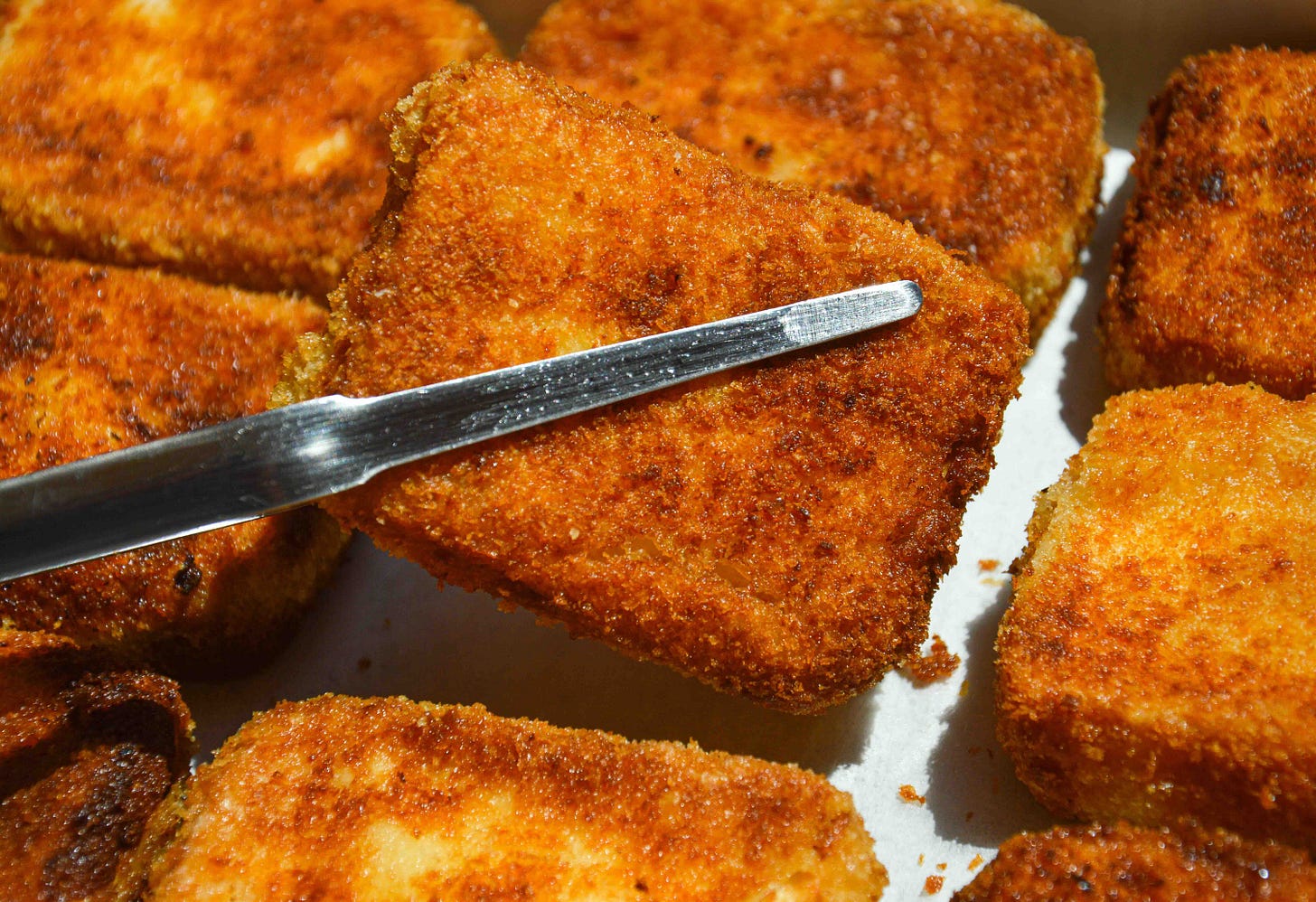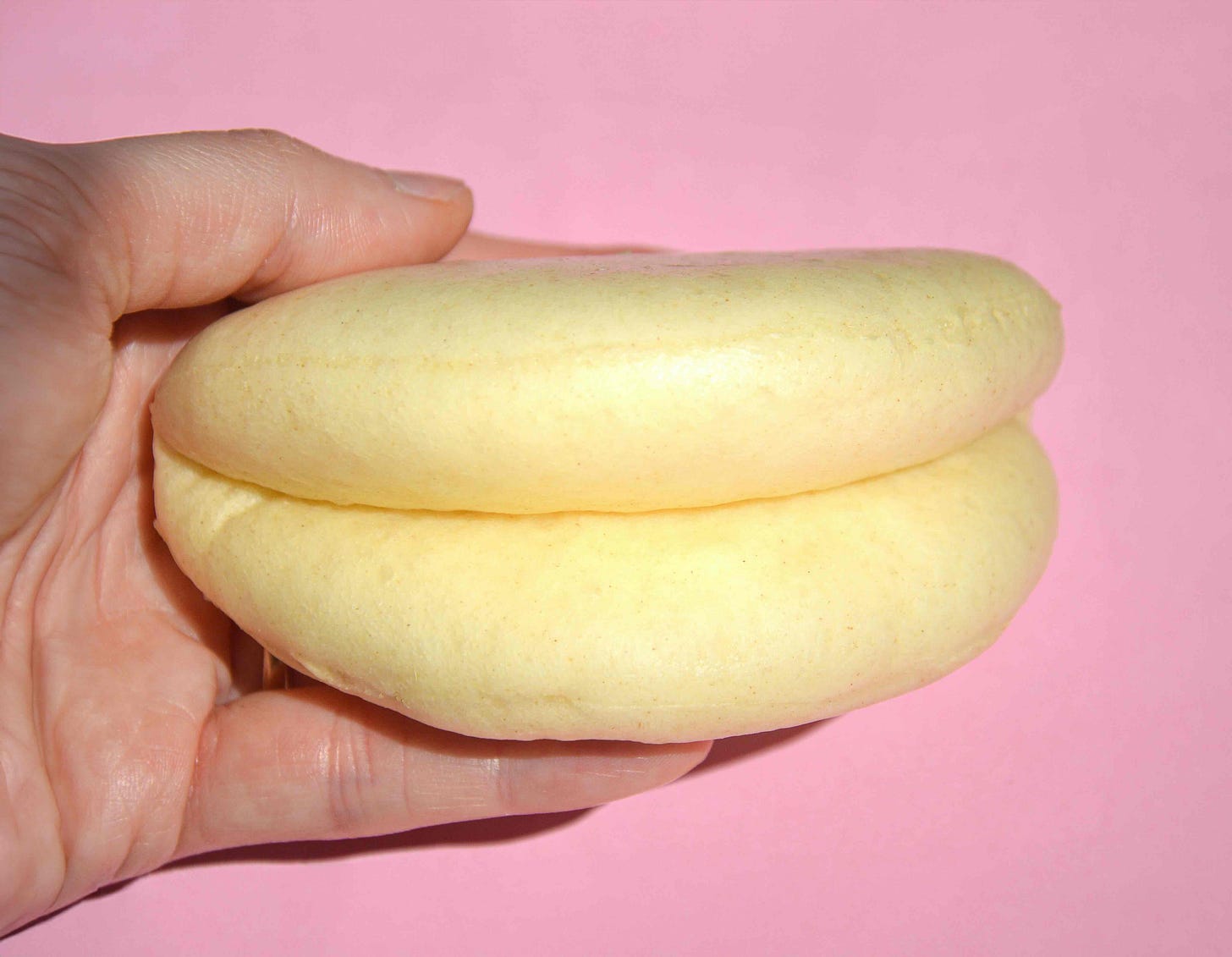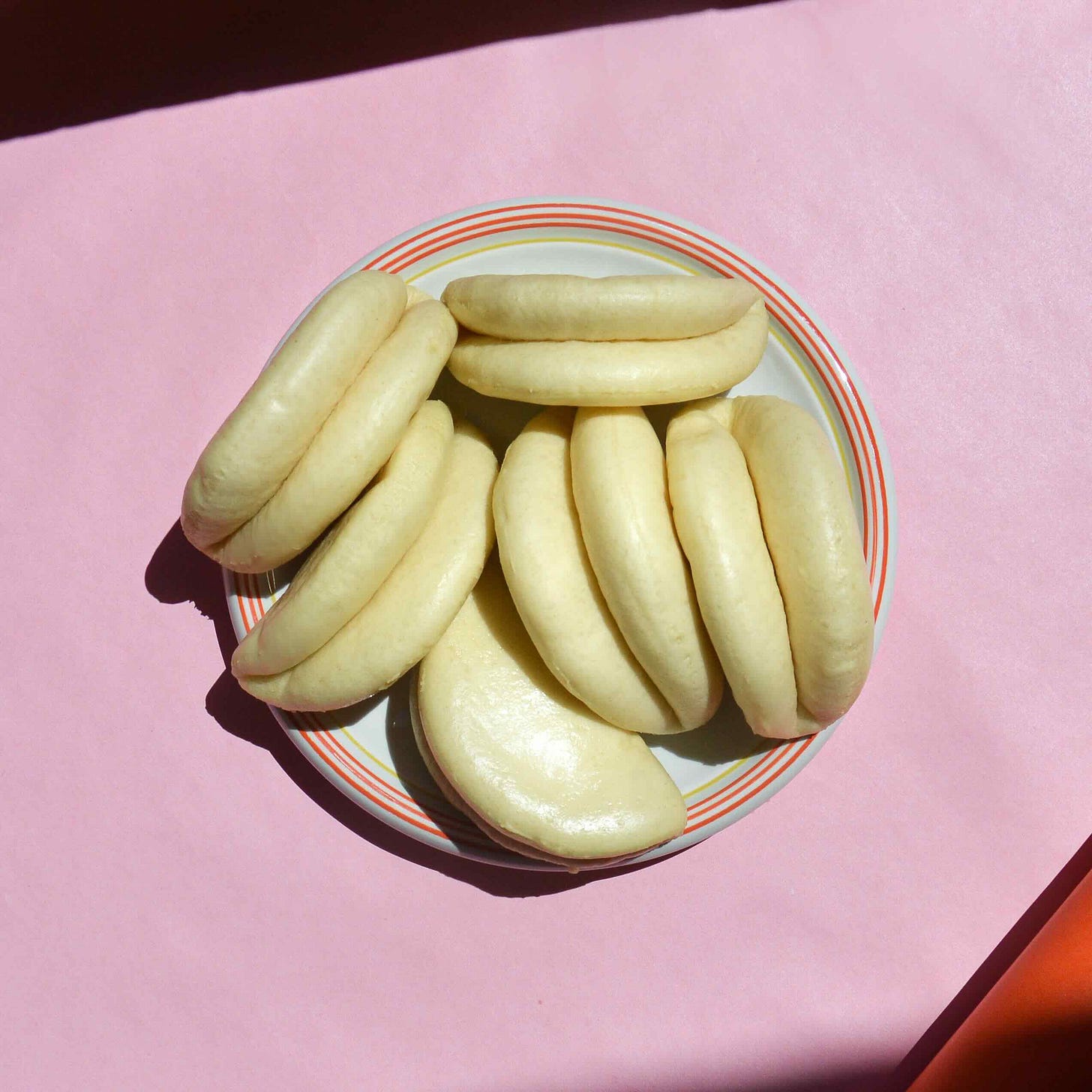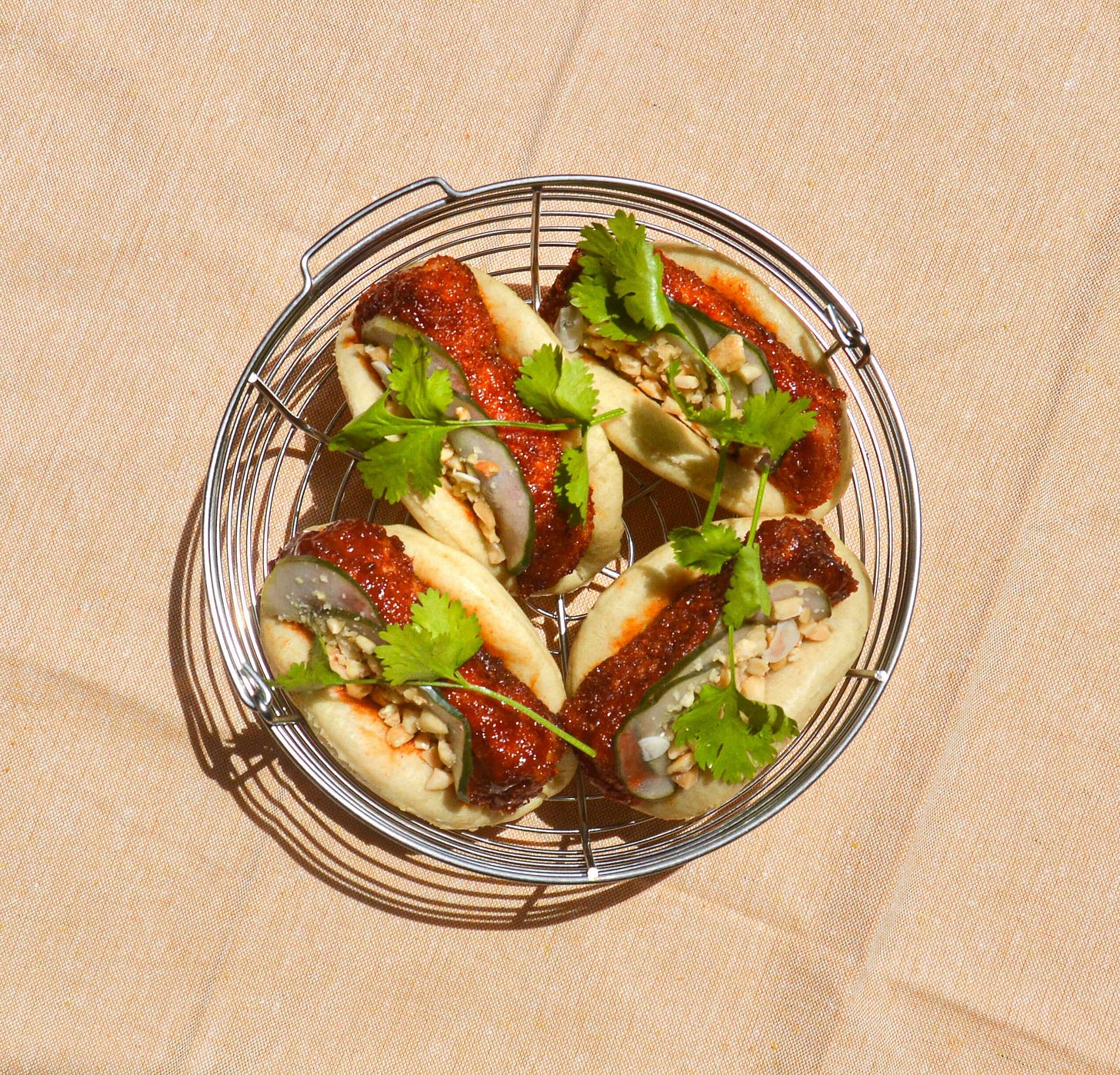Gochujang glaze tofu bao with pickled cucumber, peanuts and coriander
Serve: 10 buns
Ingredients:
Dough
300g bread flour (13% protein)
4g baking soda
3g sea salt
170g warm milk (36°C)
4g active dry yeast
10g white sugar
vegetable oil
Panko tofu
400g firm silken tofu
30g light soy sauce
30g cold water
30g plain flour
1 egg
40g panko
Gochujang glaze
150g gochujang paste
35g light soy sauce
15g brown sugar
1 garlic clove
15g white vinegar
10g ketchup
10g sesame oil
Pickled cucumber
130g cucumber (about half of a cucumber)
100g white vinegar
100g water
30g white sugar
3g black peppercorns
3g anise seeds
1 garlic clove
3 red chillis
3g sea salt
For serving
fresh coriander
40g roasted peanuts
Extra notes:
If you prefer a pale-coloured baos look - purchase bleached flour (often sold in Asian supermarkets)
Don’t mix up firm silken tofu with a silken tofu - a softer version. The former one holds its shape better. If you can’t find it - use another firm type that will be suitable for shallow-frying.
For a deeper tofu flavour, I recommend brining it overnight. The same goes for cucumber pickles!
If you bought raw-in-shell peanuts, check out this post to see how I prep them
Method:
Pickling cucumber
Thinly slice garlic.
Combine white vinegar, water, sugar, black peppercorns and anise seeds in a pot, bring to a boil, and simmer until the sugar dissolves.
Thinly cut cucumber into 2mm slices using a mandolin and place them in a container. Add the garlic and red chilli. Pour the hot vinegar brine over the cucumbers and set aside.
Gochujang glaze
Mince one garlic clove. Combine all the ingredients in a bowl, add garlic and whisk until homogenous. Add a couple of tablespoons of cold water if the glaze is too thick.
Brine tofu
Cut tofu into around 2cm slices. Mix soy sauce and cold water in a bowl. Place the cut tofu in a container and cover it with the brine.
In the meantime set up the breading station. Prepare 3 separate containers: with sieved plain flour, whisked whole egg, and panko (see the photo below).
Bao dough
Heat the milk in a small pot, ensuring it is not too cold, as this would prevent the yeast from activating. Be careful not to overdo it, since hot temperature kills the yeast. If not sure, check that the temperature does not exceed 36°C.
Add sugar to the milk to aid the leavening process, stir to dissolve, and then add the yeast. Set aside for about 10 minutes or until small bubbles form on the surface.
Sift the bread flour.
In a bowl, combine the sifted bread flour, baking soda and salt.
Pour the wet ingredients into the dry ones and mix in a bowl. Form the mixture into a shaggy ball with your hands still in the bowl. If the dough feels too dry, add a little more water.
Remove the dough from the bowl and knead it on the counter until it becomes cohesive and smooth, which should take about 15 minutes. Place the dough back in the bowl, cover it with a cloth and let it proof in a warm environment for about 1 hour or until it doubles in size.
Cut 10 rectangles of baking paper, each measuring 10x8 cm.
Forming baos
Once the dough has rested, give it more kneads.
Roll out the whole dough with a rolling pin (my dough wasn’t sticky so I didn’t need any extra flour). Cut 8 circles using a glass (10cm in diameter).
Mix the remaining dough and make another 2 circles. You should get 10 circles in total. Lightly brush one side of each circle with vegetable oil and fold it in half (see the GIF below).
Lay the baos on the baking paper cuts as shown below.
Leave the baos for a second rise for about 15 minutes (or until their size doubles).
Bread tofu
Follow a 3-step dry-and-wet hand system method. One hand is going to touch only the dry ingredients (flour+panko) and the other the wet (egg).
First, coat the tofu in flour and shake off any excess flour. Then, dip in the egg mix, shake off again and then place it in the breadcrumbs. Ensure the tofu is thoroughly coated with the panko, leaving no empty spots.
Be careful not to break the fragile structure of the tofu. I used a small palette knife to help me lift the tofu.
Place baking paper on a tray and layer the breaded tofu.
Cook tofu
Heat a pan with vegetable oil (about 1 cm deep) over medium heat and fry the bottom half of the breaded tofu until golden brown. When ready, use tongs to delicately flip them up and fry the other side.
While the tofu is being cooked prepare the pot for steaming the baos. If you don’t have a bamboo steamer, place a metal basket steamer in a pot. Level up the steamer with balls made with tin foil and place them underneath. Cover the pot with water ensuring the water does not touch the basket's floor. Put a lid on and bring the water to a boil (check the photo below).
Keep an eye on the tofu - once ready, place it on kitchen paper to drain the surplus oil.
Fry the second batch of tofu.
Steam baos
Make sure that the baos have risen by now.
Once the water starts to boil, place the buns lined with baking paper in the basket making sure to leave plenty of space between them. In my case, I cooked 3 buns at a time. Cover with a lid and set the temperature to low.
Steam the baos for about 6 minutes. Don’t open the lid too early, otherwise, they will deflate. After 6 minutes, open the lid ajar to let the hot air escape slowly and let the buns rest for a minute. Remember not to overcook the buns, otherwise they might develop a very chewy skin and get yellow.
Top off the water and steam the next batch.
Serving
Place the peanuts in a ziplock bag, lay it flat and gently pound them with the end of a rolling pin.
Cut each tofu in half lengthwise and brush it with a gochujang glaze. Carefully open each bao with your hands (be careful not to break it in half), smear a bit of the gochujang sauce on the bottom and slide in the tofu, followed by cucumber slices, fresh coriander, and peanuts.







